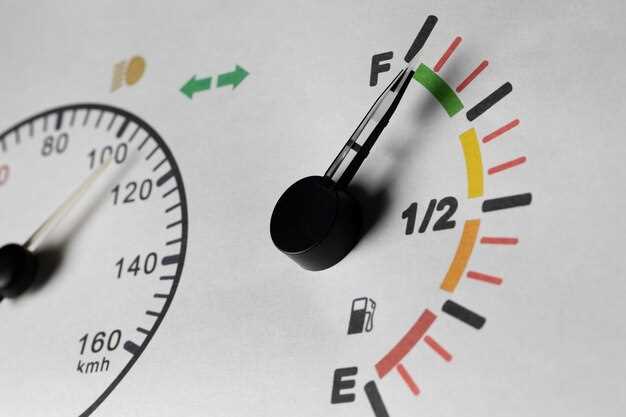
When it comes to enhancing vehicle performance, torque is a critical factor that directly affects acceleration and overall driving experience. Tuning your engine for optimal torque output can lead to significant improvements in how your vehicle responds under various conditions, whether on the road or the track. Understanding the intricacies of engine tuning is essential for any automotive enthusiast looking to unlock the full potential of their machine.
Several key components and systems play a vital role in determining the engine’s torque characteristics. Factors such as air-fuel mixture, fuel delivery, ignition timing, and exhaust system design all contribute to the engine’s ability to generate torque effectively. By carefully adjusting these elements, you can create a more harmonious relationship within the engine, leading to greater efficiency and power output.
In this article, we will explore various tuning tips that can help you maximize your engine’s torque output. From optimizing your engine management system to upgrading specific hardware, we will provide actionable insights to enhance your vehicle’s performance. Whether you are a seasoned mechanic or a DIY enthusiast, these strategies can help you achieve the torque levels you desire while ensuring your engine operates smoothly and reliably.
Optimizing Air-Fuel Mixture for Increased Torque

One of the most critical factors in tuning an engine for maximum torque output is achieving an optimal air-fuel mixture. This mixture plays a decisive role in combustion efficiency and overall engine performance. A well-balanced ratio ensures that the engine runs smoothly and produces the desired torque at various RPMs.
The ideal air-fuel mixture typically ranges from 14.7:1 to 12.5:1 in lambda terms, depending on whether the focus is on efficiency or power. A leaner mixture (higher air ratio) can improve fuel efficiency, while a richer mixture (lower air ratio) often results in higher torque at the expense of fuel economy. Fine-tuning this ratio is essential to cater to specific driving conditions and performance objectives.
Utilizing high-quality fuel can also contribute significantly to optimizing the air-fuel mixture. Premium gasoline, for instance, has higher octane ratings that can withstand increased compression ratios and prevent knocking. This allows for a more aggressive tuning strategy that favors torque without compromising engine safety.
Additionally, ensuring that the engine’s intake and exhaust systems are performing efficiently is crucial. Modifications such as upgraded air intakes, throttle bodies, and exhaust manifolds can improve airflow, directly affecting how well the air-fuel mixture supports combustion. An unrestricted flow allows for a more immediate and consistent delivery of torque across the rev range.
Lastly, utilizing modern tuning software and diagnostic tools can help in monitoring and adjusting the air-fuel mixture accurately. Through real-time data analysis, tuners can make informed adjustments to the fuel map, ensuring that the engine operates at its peak performance with an ideal air-fuel ratio, thus maximizing torque output without compromising engine longevity.
Upgrading Turbochargers and Superchargers for Higher Torque
One of the most effective ways to enhance engine torque output is by upgrading your turbocharger or supercharger. These forced induction systems compress the intake air, allowing for a greater volume of oxygen to enter the combustion chamber, which results in improved power and torque.
When selecting a turbocharger, consider the size and design to match your engine’s specifications. A larger turbo typically offers higher torque at higher RPMs by pushing more air into the cylinders. However, it is crucial to balance size with lag time; a turbo that is too large may result in delayed response. For optimal tuning, choose a turbo that complements your engine’s power band, ensuring that torque increases across usable RPM ranges.
On the other hand, superchargers provide near-instantaneous boost, as they are mechanically driven by the engine. This means that they can deliver higher torque at lower RPMs compared to turbochargers. Upgrading to a high-efficiency supercharger can dramatically improve torque, especially in applications that require immediate throttle response, such as off-roading or racing.
Regardless of the system chosen, tuning plays a vital role in maximizing torque output. After upgrading your forced induction system, recalibrating the engine management system is essential to ensure that the air-fuel mixture and ignition timing are optimized for the new airflow characteristics. This tuning process can significantly enhance torque delivery, providing a smoother and more powerful driving experience.
Incorporating supporting modifications such as upgraded intercoolers, exhaust systems, and fuel injectors will further enhance the benefits of your upgraded turbocharger or supercharger. These components work together to reduce intake temperatures, improve exhaust flow, and ensure that the engine receives the necessary fuel to take advantage of the increased air supply.
In conclusion, upgrading turbochargers and superchargers offers a reliable method for increasing engine torque. By carefully selecting the right system and performing thorough tuning, you can unlock significant improvements in your vehicle’s performance while achieving a more exhilarating driving experience.
Tuning Exhaust Systems for Improved Torque Response

Optimizing your exhaust system is crucial for enhancing engine torque output. A well-designed exhaust system not only facilitates better gas flow but also contributes to the overall performance of the engine. Below are essential considerations for tuning your exhaust system to achieve improved torque response:
- Header Design: Choosing the right header design can significantly impact exhaust flow. Long-tube headers generally provide better torque in low to mid RPM ranges, while shorty headers may boost high-end power. Analyze your performance goals to select the appropriate headers.
- Exhaust Diameter: The diameter of the exhaust pipe affects the back pressure and flow rate. A larger diameter can reduce back pressure, improving high RPM torque, but it may sacrifice low-end torque. Aim for a balanced size that complements your engine specifications.
- Collector Design: The collector plays a vital role in merging exhaust gases efficiently. A well-engineered collector can enhance scavenging effects, which help in pulling exhaust gases out of the engine and drawing in more fresh air, thus improving torque.
- Muffler Selection: Mufflers are crucial in determining the sound and flow of the exhaust. Performance mufflers can reduce back pressure while ensuring a smoother, faster exit of exhaust gases. Consider straight-through designs for maximum performance.
- Material Quality: The choice of materials for the exhaust system can influence weight and thermal efficiency. Stainless steel systems offer durability and resistance to corrosion, which is beneficial for long-term performance.
- Tuning and Adjustments: After upgrading your exhaust system, proper tuning is essential. Utilize a performance chip or ECU remapping to adjust fuel maps and ignition timing for optimal performance and torque.
Implementing these tuning strategies for your exhaust system can lead to noticeable improvements in engine torque response. Regular testing on a dynamometer can help you measure the effects of these modifications and refine your setup for maximum performance.



